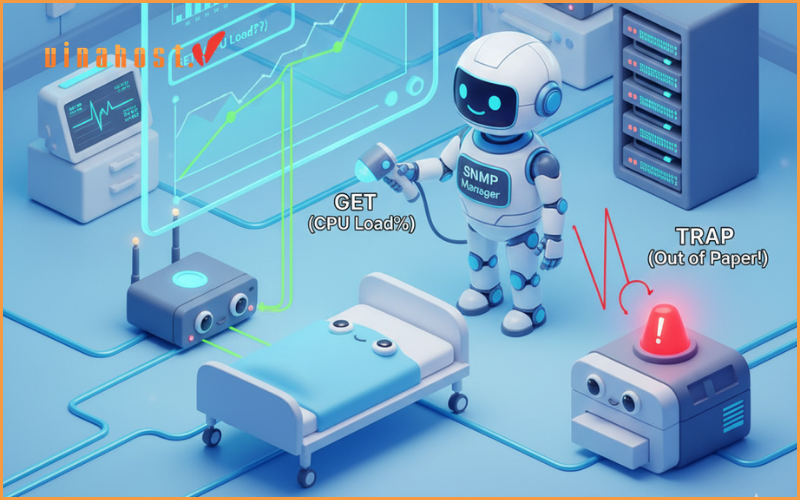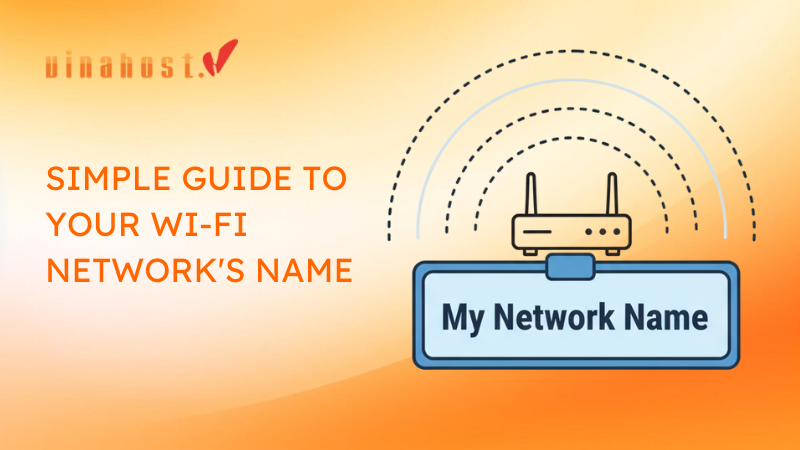The quest for the perfect domain isn’t always straightforward, especially when desired domain names are already registered by others. Domain backorders is an ingenious solution that allows eager enthusiasts to lay claim to coveted domains when they become available. This comprehensive guide aims to help you know what is Domain Backorder, how it works and everything in between. From understanding the intricacies of expired domains to navigating auction dynamics, VinaHost delve into the nuances of domain backordering to equip readers with the knowledge needed to navigate this realm effectively.
1. What is Domain Backorder?
What is domain backorder service? Domain backorder is a service offered by domain registrars and third-party providers that allows individuals or businesses to attempt to acquire a domain name that is currently registered but may become available for registration in the future.
When a domain expires, it typically goes through a grace period during which the current owner can renew it. If the domain is not renewed within this grace period, it becomes available for registration by the public.
Domain backorder services allow users to monitor domain names that are about to expire and attempt to register them as soon as they become available. This gives individuals or businesses the opportunity to secure valuable or desirable domain names that may have expired or are no longer actively used by their previous owners.
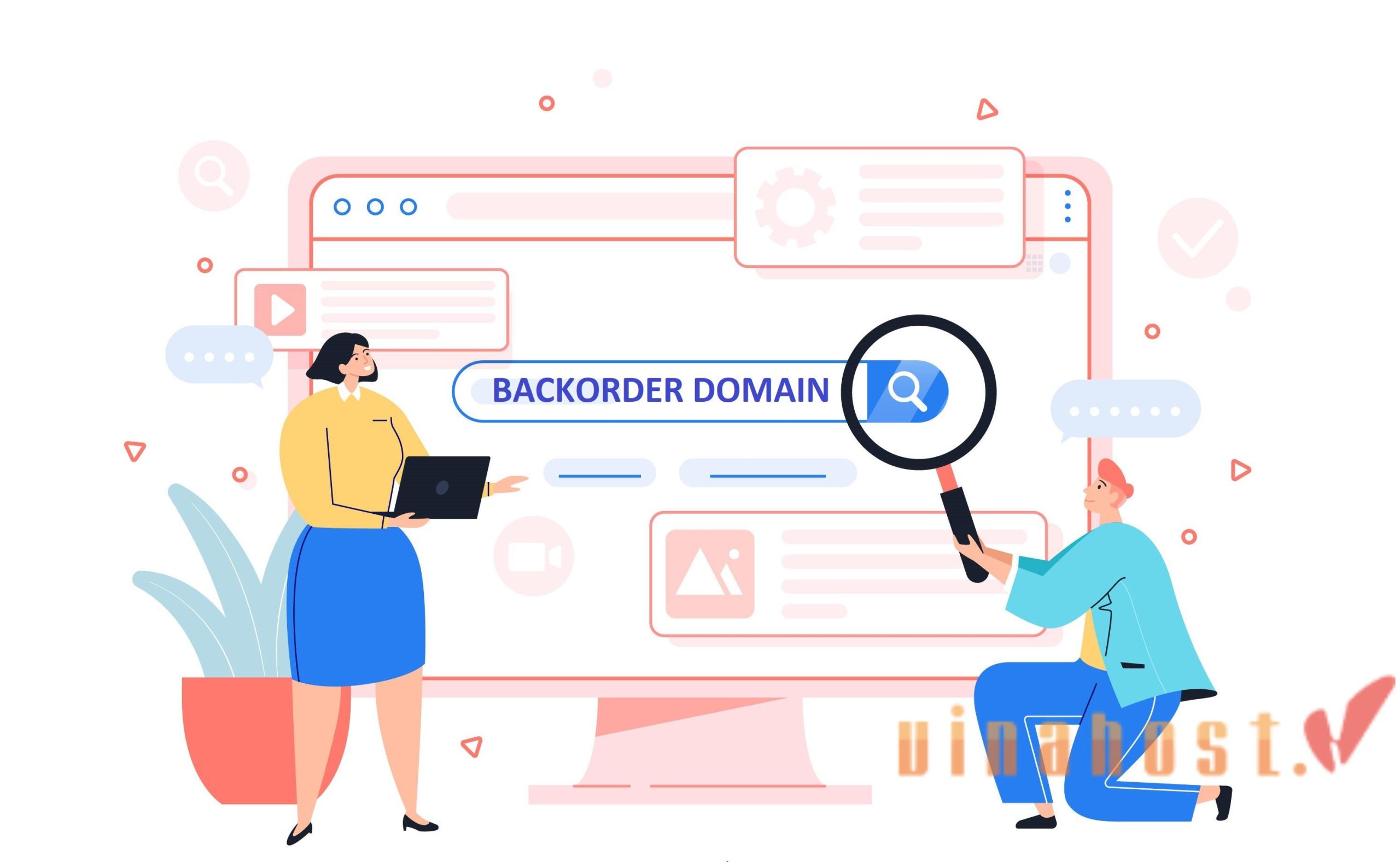
However, it’s important to note that there is no guarantee of success with domain backorders, as multiple parties may be interested in registering the same domain name once it becomes available. Additionally, some domain registrars offer backorder services directly to their customers as part of their domain registration services.
Also read: What is Domain & How It Impacts Your Online Presence
2. Why Use a Domain Backorder Service?
Using a domain backorder service can be beneficial for several reasons:
- Opportunity to secure valuable domains: Domain backorder services provide an opportunity to acquire valuable domain names that may have expired or become available for registration. These domain names may have desirable keywords, be highly brandable, or have existing traffic and backlinks, making them valuable assets for businesses, individuals, or investors.
- Competitive advantage: By using a domain backorder service, you can gain a competitive advantage over other potential buyers who may be interested in the same domain name. Backorder services typically automate the process of monitoring domain availability and attempting to register the domain as soon as it becomes available, giving you a better chance of securing the domain before others.
- Brand protection: Domain backorder services can help businesses protect their brand identity by allowing them to monitor and acquire domain names that are similar to their existing brand or trademarks. This prevents competitors or malicious actors from registering domains that could potentially confuse or mislead customers.
- Save time and effort: Monitoring domain expiration dates and attempting to register expired domains manually can be time-consuming and labor-intensive. Domain backorder services automate this process, saving you time and effort by handling the monitoring and registration process on your behalf.
- Investment opportunity: For domain investors or speculators, domain backorder services offer a way to identify and acquire potentially valuable domain names for resale or development. By investing in expired or expiring domains with high resale potential, investors can potentially generate significant returns on their investment.
Domain backorder services provide a convenient and efficient way to acquire valuable domain names, protect brand identity, gain a competitive edge, and capitalize on investment opportunities in the domain name market.
3. How Does Domain Backordering Work?
Now you know what is a domain backorder, but how does it work? Domain backordering works by allowing individuals or businesses to reserve their interest in acquiring a domain name that is currently registered but may become available for registration in the future.

Identifying the domain:
- Selection: You identify a domain name you want, but it’s already registered by someone else.
- Backorder placement: You place a backorder for the domain with a domain backordering service.
Monitoring the domain:
- Continuous tracking: The backorder service monitors the domain’s status. It keeps an eye on the expiration date and other key status changes.
Domain expiration and grace periods:
- Expiration: If the current owner does not renew the domain by the expiration date, it enters a grace period.
- Grace period: This period usually lasts about 30-45 days, during which the current owner can still renew the domain at the regular renewal price.
Redemption Grace Period (RGP): If the domain is not renewed during the grace period, it enters the Redemption Grace Period (RGP), typically lasting about 30 days. The current owner can still reclaim the domain but often at a higher fee.
Pending delete: If the domain is not redeemed, it enters the pending delete status. This period usually lasts 5 days, during which the domain cannot be renewed or restored.
Domain deletion and availability: After the pending delete period, the domain is deleted from the registry’s database and becomes available for new registration.
Backorder fulfillment:
- Automated Attempts: The backorder service makes automated attempts to register the domain the moment it becomes available.
- Competition: If multiple backorders are placed by different parties, it can become competitive. Some services may auction the domain among interested parties.
Acquisition and registration:
- Successful backorder: If your backorder service successfully registers the domain, you become the new owner.
- Fees: You typically pay a backorder fee and the domain registration fee upon successful acquisition.
Alternative outcomes:
- Current owner renewal: If the current owner renews the domain during the grace period or redemption period, the backorder attempt fails.
- Multiple backorders: If multiple backorders are placed, the domain may go to auction or be awarded based on the service’s policies.
Also read: What is VN domain? | Overview of domain names .VN
4. Advantages of Using Domain Backorders
What is domain backorder advantages? Domain backorders can be a valuable tool for acquiring desired domain names, particularly for brand protection purposes. Let’s see the key advantages below:
- Prevents missed opportunities: If you have your eye on a specific domain name that’s currently registered but nearing expiration, a backorder can significantly increase your chances of acquiring it. By expressing your interest beforehand, you’re automatically in the running when it becomes available.
- Faster than manual registration: The backorder process automates the registration attempt. Once the domain becomes available, the registrar tries to register it on your behalf immediately. This eliminates the need for manual monitoring and registration attempts, potentially giving you an edge over others who might try to register it themselves once it’s released.
- Secures domain variations: If a domain name similar to your brand is about to expire, a backorder can help prevent someone else from claiming it. This is especially important for protecting your trademarks and online presence.
- Prevents malicious use: By securing variations of your brand name, you reduce the risk of someone registering them for malicious purposes like phishing scams or impersonating your brand.
- Compared to direct purchase: In some situations, a backorder might be cheaper than trying to acquire a domain directly from the current owner through negotiation. The owner might set a high price for a direct purchase, whereas the backorder fee is a fixed cost charged by the registrar.
- Convenience: Backorders offer a convenient way to express your interest in a domain and automate the registration attempt.
- Wide availability: Domain backorder services are offered by most major domain registrars, making it easy to get started.
5. Disadvantages and Considerations

- No guarantee of success: Placing a backorder does not guarantee that you will be able to acquire the desired domain name. If multiple parties are interested in the same domain, it may go to auction, and the highest bidder will win. Even in first-come, first-served registration processes, there is no certainty that you will be the first to successfully register the domain.
- Competition: Domain backordering is a competitive process, especially for highly desirable domain names. You may be competing against other individuals, businesses, or domain investors who are also interested in acquiring the same domain. This can drive up the price of the domain or make it more challenging to secure.
- Additional costs: Domain backordering services often charge a fee for placing a backorder, and there may be additional costs associated with winning an auction or successfully registering the domain. These costs can add up, especially if you are pursuing multiple domain names or participating in competitive auctions.
- Risk of domain redemption: If the current owner of the domain decides to renew it after the expiration date, the domain may enter a redemption period during which it can be redeemed for a fee. This can delay the availability of the domain and increase the overall cost of acquiring it.
- Legal considerations: Backordering domains similar to existing trademarks or brands can raise legal issues, especially if the domain is registered in bad faith or used for malicious purposes. It’s essential to consider trademark infringement and intellectual property laws when pursuing backordered domains to avoid potential legal disputes.
- Strategic planning: Successfully acquiring a backordered domain requires strategic planning and timing. You need to carefully monitor domain expiration dates, assess the competition, and be prepared to act quickly when the domain becomes available. Failure to plan effectively can result in missing out on valuable domain opportunities.
- Domain history: Some backordered domains may have a history of spam, malware, or other unethical activities. Acquiring such domains can tarnish your brand reputation or negatively impact your website’s search engine rankings. It’s crucial to conduct thorough research on the domain’s history before pursuing a backorder.
Also read: What is Domain Privacy? | Do you need Domain Privacy?
6. Factors Affecting Domain Backorder Success Rates
Several factors can influence the success rates of domain backordering:
Registrar and backorder service quality:
- Different backorder services have varying success rates. Reputable services with a proven track record are generally more effective.
- Services with extensive registrar networks and advanced technology are better positioned to capture domains quickly when they become available.
Domain popularity and demand:
- Popular domains attract more backorders, increasing competition and reducing the likelihood of success.
- Domains with niche-specific keywords might have less competition compared to generic, high-traffic keywords.
Timing and persistence:
- Services that check domain availability more frequently are more likely to succeed.
- Placing a backorder as early as possible can give you a competitive edge, especially with services that prioritize first-come, first-served.
Current owner’s actions:
- If the current owner decides to renew the domain, your backorder attempt will fail.
- Domains often have grace and redemption periods during which the current owner can still renew them, affecting the success of your backorder.
Auction and bidding processes:
- If multiple backorders are placed, the domain might go to auction, where your success depends on your willingness to bid higher than others.
- Effective bidding strategies and understanding auction dynamics can influence your chances.
Domain registrar policies:
- Different registrars have varying policies regarding domain expiration, grace periods, and the drop process.
- Some backorder services have partnerships with specific registrars, improving their success rates for domains managed by those registrars.
Domain characteristics:
- Some top-level domains (TLDs) have higher competition and different drop patterns. For example, .com domains are more sought after than less common TLDs.
- Domains with a clean history and good SEO performance are more desirable, increasing competition.
Technical factors:
- Faster servers and better infrastructure enable a backorder service to send registration requests more quickly.
- Advanced algorithms that predict drop times and optimize registration attempts can significantly impact success rates.
Geographic and legal considerations:
- Some regions have specific regulations affecting domain registration and backordering.
- Domains with potential trademark conflicts might have legal restrictions that impact their availability and backorder success.
Market trends and economic factors:
- Shifts in market trends can affect domain demand and competition.
- Economic downturns or booms can influence domain purchasing behaviors and backorder success rates.
Also read: What is a root domain? | Why does a root domain matter?
7. Tips for Maximizing Your Domain Backordering Success
Here are some tips to maximize your success with domain backordering:
Target selection:
- Focus on expiring domains: Prioritize domains that are genuinely nearing expiration rather than those with a long way to go. This increases the chances of the domain becoming available and avoids unnecessary fees for backordering domains that might not even expire.
- Relevance and value: Target domains that hold significant value for your business or project. This could be due to strong brand potential, relevant keywords, or memorability. The potential gain should justify the backordering cost.
- Consider alternatives: Research similar domain names that might be available for registration. Backordering can be a good secondary strategy if these alternatives aren’t ideal.
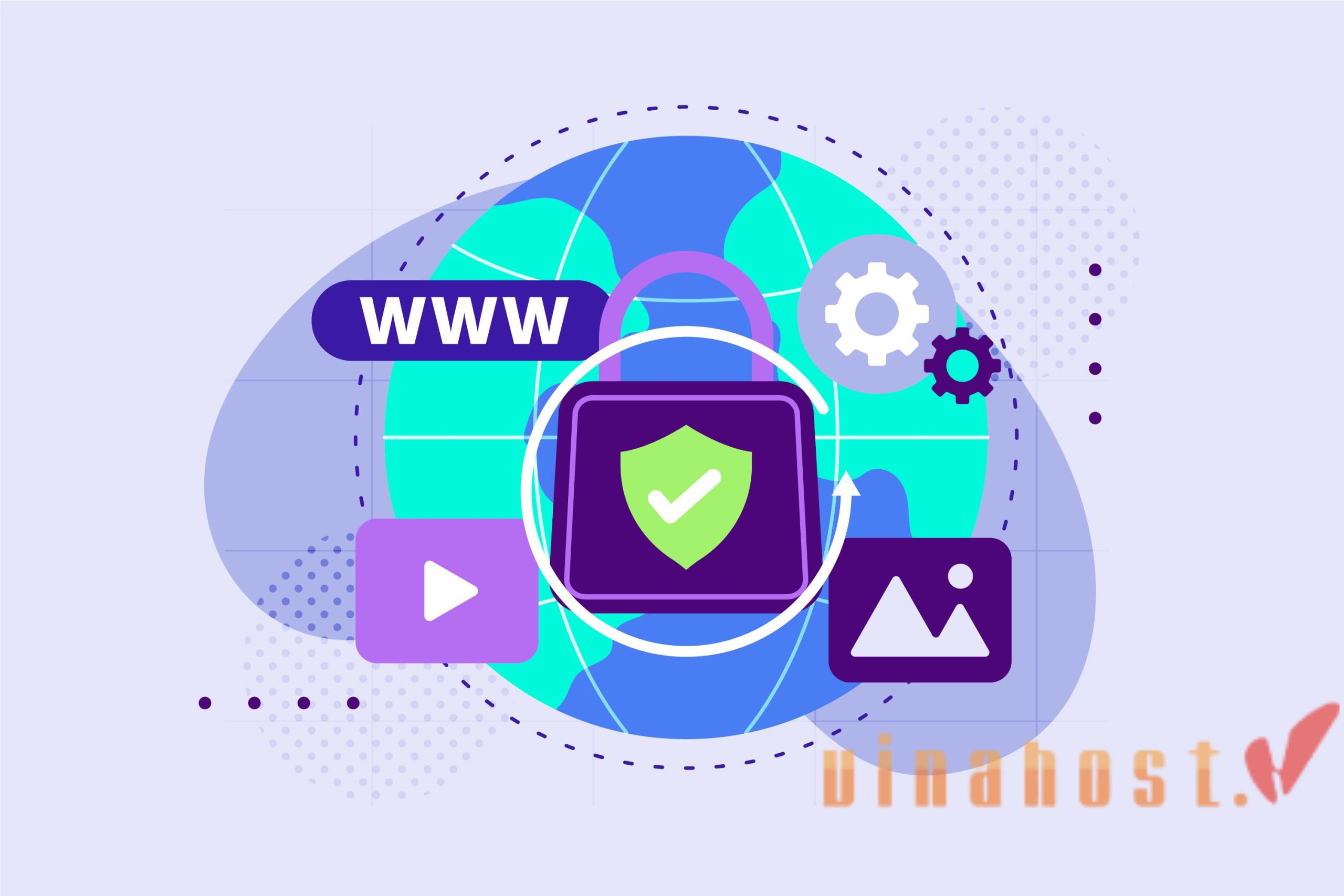
Backordering strategy:
- Choose a reputable registrar: Select a domain registrar known for its reliability and success rate with backordering. Research different registrars and compare their fees, success rates, and customer support.
- Time your backorder: Ideally, place your backorder close to the domain’s expiration date but after the renewal grace period has begun. This minimizes the chance of the current owner renewing at the last minute and avoids unnecessary fees if the domain gets renewed before your backorder.
- Multiple backorders (optional): Consider placing backorders on several variations of your desired domain name (e.g., with and without hyphens, plurals or different TLDs). This increases your chances of success if the primary domain name receives competing backorders. However, weigh the potential benefits against the additional backordering costs.
Domain Registration VietNam | Buy VN Domains | Just 22$
Cost management:
- Compare backorder fees: Different registrars have varying backorder fees. Compare fees before placing a backorder and consider potential savings by placing backorders on multiple domains with the same registrar (if they offer volume discounts).
- Set a budget: Allocate a specific budget for domain backordering. This helps you avoid overspending and keeps your attempts strategic.
- Consider alternatives: If backordering fees seem excessive, explore alternative approaches like monitoring domain expirations yourself and attempting to register the domain directly when it becomes available.
Monitoring and follow-up:
- Track your backorders: Keep track of your backordered domains and their expiration dates. This allows you to adjust your strategy or place additional backorders if necessary.
- Monitor the domain: You can use WHOIS monitoring tools to receive notifications if the domain’s ownership changes or the registration status updates. This can help you stay informed and potentially react faster if an opportunity arises.
- Follow up with the registrar (optional): If your backorder is unsuccessful, consider contacting the registrar to inquire about the reasons behind the failure. This might provide insights for future backordering attempts.
Domain backordering success isn’t guaranteed, but careful planning and choosing a reputable registrar with a good success rate can increase your odds of acquiring your desired domain name.
8. The Future of Domain Backorders

- Technological advancements: Continued advancements in domain monitoring tools, artificial intelligence, and machine learning algorithms are likely to enhance the efficiency and accuracy of domain backordering processes. Automated systems will provide faster notifications and better insights into domain availability, improving success rates for backorderers.
- Increased competition: As the internet continues to grow and more businesses establish an online presence, competition for desirable domain names is expected to intensify. This heightened competition may lead to more aggressive bidding strategies, higher prices, and lower success rates for domain backorders.
- Domain name industry changes: Changes in domain registration policies, registrar practices, and industry regulations can impact the availability and accessibility of backordered domains. Adaptation to evolving industry dynamics and staying informed about market trends will be essential for maintaining competitiveness in domain backordering.
- Emergence of new TLDs: The introduction of new generic top-level domains (gTLDs) and specialized domain extensions offers fresh opportunities for domain backordering. Backorderers may target niche-specific or industry-relevant TLDs to acquire unique and brandable domain names.
- Legal and regulatory considerations: Heightened scrutiny of domain ownership and registration practices, along with increased enforcement of intellectual property rights, may impact the landscape of domain backorders. Compliance with legal requirements and adherence to ethical domain acquisition practices will become increasingly important for backorderers.
- Demand for premium domains: Premium domain names, consisting of short, memorable, and brandable keywords, will continue to command high demand from businesses seeking to establish a strong online presence. The pursuit of premium domains through backordering may become more competitive, requiring sophisticated strategies and significant investment.
- Integration with blockchain technology: The adoption of blockchain technology in domain registration and management could revolutionize the domain backordering process. Blockchain-based platforms may offer decentralized, transparent, and secure mechanisms for acquiring and trading domain names, potentially disrupting traditional backordering methods.
9. FAQs
9.1. How much does domain backordering cost?
The cost of domain backordering involves multiple components, including the initial service fee, potential auction costs, and ongoing domain registration fees. The total expense can range from as little as $10 to several thousand dollars, depending on the domain’s value and the level of competition.
The cost of domain backordering can vary widely based on several factors, including the service provider, the domain’s value, and the specifics of the backordering process.
You can refer to the examples of provider fees
- GoDaddy: Charges around $25 for a domain backorder, with an additional cost if the domain goes to auction.
- NameJet: Initial backorder fee is around $39, with additional costs if the domain enters an auction.
- SnapNames: Charges typically start at $69 for a backorder, with auction costs varying based on the domain’s final bid.
- DropCatch: Generally charges $59 for a backorder, with the potential for higher costs if the domain is auctioned.
Also read: The Value of Domain Names: Choosing the Right Domain for Your Website
9.2. Is there a guarantee that I’ll get the domain?
The cost of domain backordering can vary depending on several factors, including the domain registrar or backordering service provider you choose, the popularity and demand for the desired domain, and any additional services or features included in the backordering package.
Typically, domain backordering services charge a one-time fee for placing a backorder on a specific domain name. This fee can range from a few dollars to several hundred dollars, depending on the service provider and the perceived value of the domain. Some providers may offer tiered pricing based on the level of service or priority access to certain domain inventory.
In addition to the backordering fee, there may be additional costs associated with successfully acquiring the backordered domain. For example, if the domain goes to auction, you may need to pay the winning bid amount or participate in a bidding process, which can drive up the overall cost.
It’s essential to carefully review the pricing structure and terms of service of the domain backordering service you’re considering to understand the total cost involved and any potential additional fees or expenses. Additionally, consider your budget and the value proposition of the desired domain when evaluating the cost-effectiveness of domain backordering for your specific needs.
9.3. What happens if multiple backorders are placed on the same domain?

9.4. Can I backorder a domain that is not yet expired?
If multiple backorders are placed on the same domain, it typically triggers an auction process or a first-come, first-served registration process, depending on the domain registrar’s policies.
- Auction process: In some cases, when multiple backorders are placed on the same domain, the domain registrar may initiate an auction process to determine who gets to register the domain. Bidders place bids on the domain, and the highest bidder at the end of the auction wins the domain. Auctions can be competitive, with bidding driving up the price of the domain.
- First-Come, First-served registration: Alternatively, some domain registrars may prioritize backorders based on the time they were placed. In this scenario, the first person to place a backorder on the domain is given priority access to register it when it becomes available. If multiple backorders were placed simultaneously or within a short timeframe, the registrar may use a random selection process or other criteria to determine who gets priority.
It’s essential to understand the domain registrar’s policies regarding backorders and how they handle situations where multiple backorders are placed on the same domain. Depending on the registrar’s procedures, you may need to be prepared to participate in an auction or accept the outcome of a first-come, first-served registration process if multiple parties are interested in the same domain.
Also read: What is Registry Lock? | Protect Domain with Registry Lock
9.5. How long does it take to register a backordered domain?
10. Conclusion
Domain backorders present an opportunity to claim valuable domain name that aligns with their branding, marketing, and strategic objectives. By understanding what is domain backorders, the mechanisms of domain expiration, monitoring, and acquisition, you gain insight into the dynamics of the domain market and how to navigate it effectively.
It’s also necessary to recognize that domain backordering is not without its challenges and uncertainties. Competition can be fierce, processes can be unpredictable, and success is never guaranteed. However, armed with knowledge and preparedness, you can maximize your chances of success and secure valuable domain assets that propel your online ventures forward.
Whether you’re a seasoned investor, a budding entrepreneur, or simply curious about the intricacies of domain acquisition, domain backorders offer endless opportunities and possibilities for those willing to embark on the journey. So, equip yourself with knowledge, harness the power of technology, and set forth on your quest to claim your digital domain!


 Tiếng Việt
Tiếng Việt English
English 简体中文
简体中文
















































































